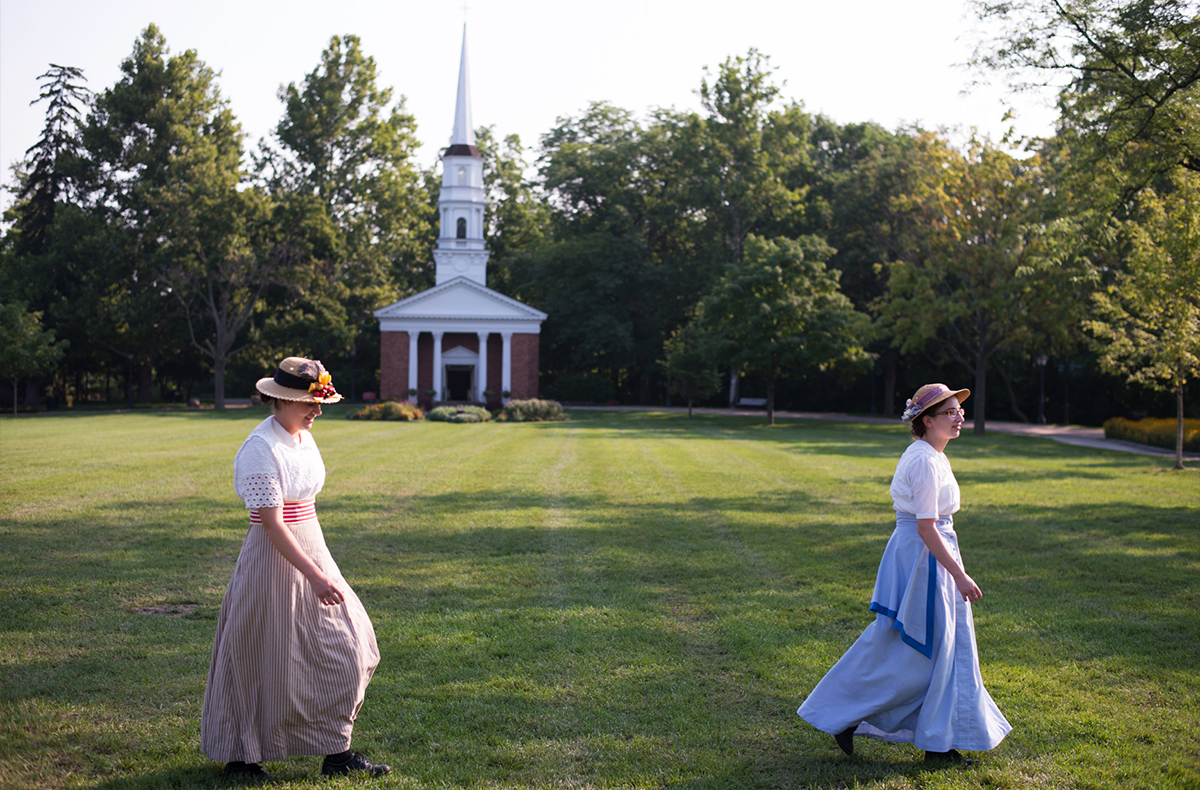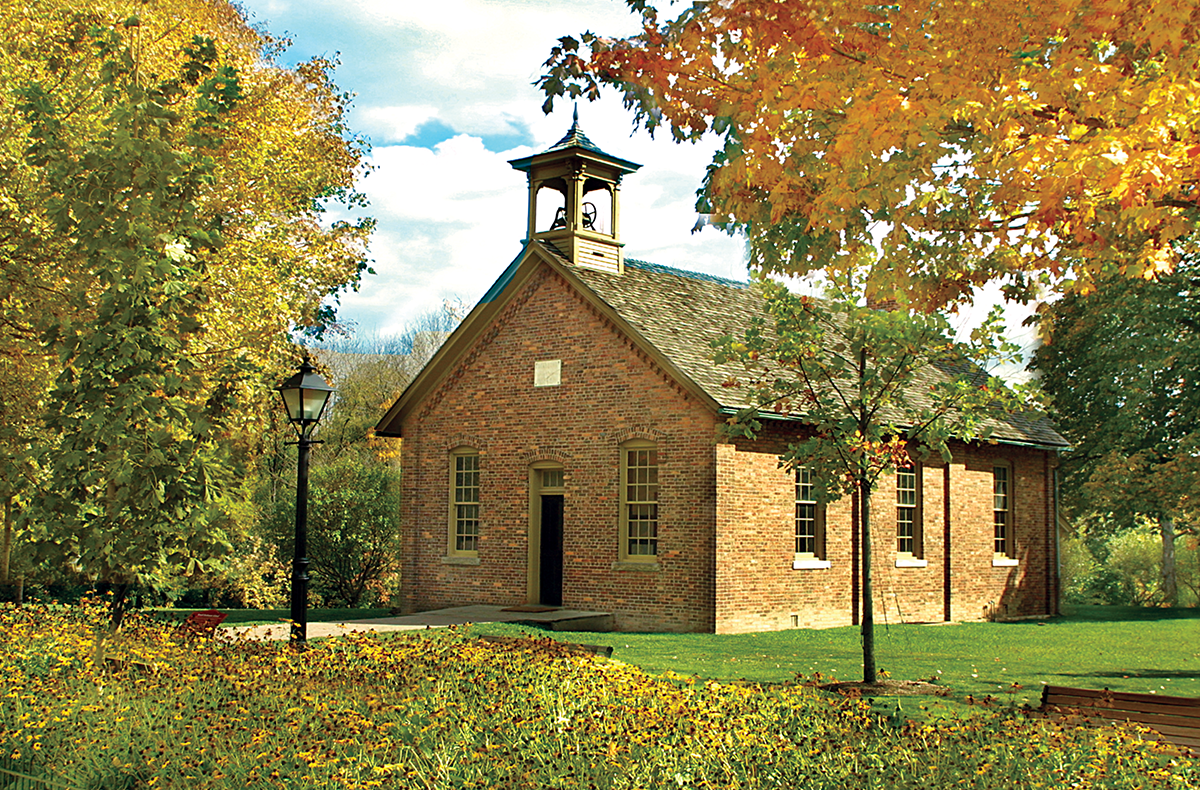Gathered on the Green
Greenfield Village’s “commons” is a careful creation by founder Henry Ford
By Jennifer LaForce
It’s true that one of Henry Ford’s earliest visions for his historic Greenfield Village was to create a “commons,” an open piece of land within a village or town designed for flexible use by everyone in the community. It’s often a green space — known as a “village green,” in fact — that townspeople use for gatherings and celebrations.
Enamored with the village greens he had seen in New England, Ford envisioned Greenfield Village’s commons to be flanked by structures meant for public gatherings, such as a place of worship and a town hall. And if an example of an existing building ready for transport to Dearborn, Michigan, couldn’t be found, he just had originals designed and built on site.

Photo by Roy Ritchie
Greenfield Village’s Martha-Mary Chapel and Town Hall are both examples of original-built structures on the Greenfield Village village green. The chapel, which is based on a Universalist church from Bedford, Massachusetts, has been holding wedding ceremonies since 1935. Patterned after New England-style public meeting halls of the early 1800s, the Town Hall is often the site of crowd-pleasing theatrical vignettes.
Other buildings Ford decided to put on his village green include the restored one-room Scotch Settlement School, which Ford actually attended in the 1870s; the 1830s-era inn now known as the Eagle Tavern restaurant; and the J.R. Jones General Store. When operated by James R. Jones from 1882-1888 in Waterford, Michigan, the store was a central stomping ground for residents and passersby, selling everything from coffee and sugar to fabrics and farm tools.

Scotch Settlement School / THF1872
Greenfield Village’s courthouse is also on the village green. And it’s not just any courthouse. From 1840-1847, Abraham Lincoln was one of several lawyers who practiced law there as part of the 8th Judicial Circuit in Postville (later renamed Lincoln), Illinois.
And completing the list of historical buildings located on the village green is country doctor Alonson B. Howard’s office, which was originally from Tekonsha, Michigan, and moved to its current location in Greenfield Village in 2003.
Interestingly, even the buildings originally constructed in Greenfield Village are now old enough to be considered historic structures themselves.
Other Social Spaces
The buildings on Greenfield Village’s village green are not the only examples of common historic structures where people would gather, socialize, communicate and participate in their town’s commerce and celebrations. Also in Greenfield Village:
Phoenixville Post Office
In the 1800s, the local post office was the epicenter for community events, functioning as both a town hall and gossip center. It was moved to Greenfield Village from Connecticut in 1929.
Smiths Creek Depot
A railroad station was a central hub of 19th-century small-town life. More than a place to catch a train, a depot was where customers sent and received packages and telegrams, caught up on the latest news and shared gossip. Built in 1858, Smiths Creek Depot once stood on the Grand Trunk Western Railway about nine miles southwest of Port Huron, Michigan.
Detroit Central Market
From 1861 to 1892, farmers, market gardeners, florists and nurserymen sold their produce in the Detroit Central Market vegetable building from rented stalls, marking over 30 years of commerce. Today, visitors of Greenfield Village can explore Detroit’s restored historic public market as it comes to life with local vendors, including farmers, growers and makers, during Detroit Central Market Weekends.
This post was adapted from an article in the Winter-Spring 2024 issue of The Henry Ford Magazine.

